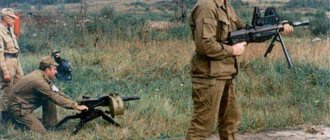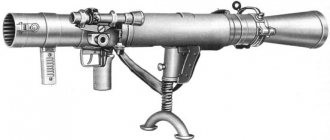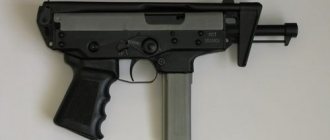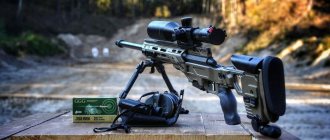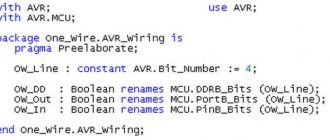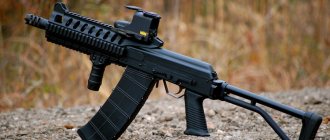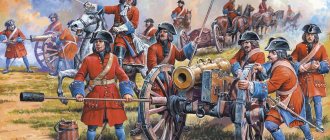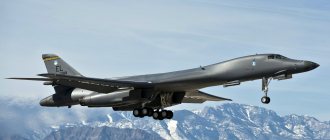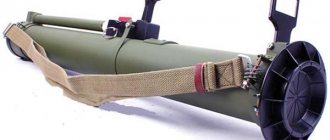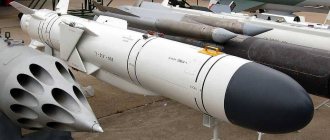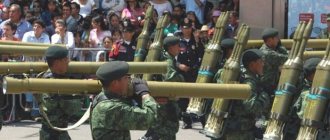If you love intellectual relaxation, then you probably do crossword puzzles or scanword puzzles in your spare time. Of course, this is a very exciting activity that allows you to expand your horizons and demonstrate your erudition.
Just how often have you encountered a situation where you need to guess, for example, a 6-letter word that you have no idea about? Most likely, you will remember more than one such case when, due to such an unfortunate misunderstanding, another scanword puzzle remained incompletely solved. But now you have a unique assistant - the Crossopen.ru !
Answers to scanwords on VKontakte, Odnoklassniki and many others
What is our service?
It will replace you with many dictionaries, encyclopedias and well-read relatives with whom you previously consulted if you were unable to find the right word on your own. With Crossopen.ru you can easily solve a crossword puzzle of any difficulty level using an intuitive search form.
The main advantage of our service is a huge database of words and questions for which you can find the appropriate answer. A user-friendly interface will provide you with a quick search for words of 3, 4, 5 or more letters . It is important to note that at the same time you can clarify your request by indicating the subject, as well as the letters you already know - the so-called word search by mask .
Let's look at the interface using a clear example: you need to find out the poet's last name, which has 6 letters, and the third is “sh”. You set up a search for 6-letter words, click on the corresponding empty cell and insert the letter you know, after which you specify the keyword - “poet”. As a result, you get various options, one of which is sure to be correct. This way you can find any answers to crossword puzzles , because it’s very simple!
You can solve any crossword puzzle!
Our service is absolutely free, and you can freely use it to search for answers to any crossword or scanword puzzle, both from the newspaper and on the Internet. For example, our database contains almost all the answers to Odnoklassniki and VKontakte crossword puzzles, which will allow you to solve them quickly and with pleasure.
Plus, you can create these kinds of brain teasers yourself! To do this, just list the words in alphabetical order and choose the options that suit you with descriptions so that the resulting crossword puzzle is interesting and educational.
So if you like to solve crosswords, the Crossopen.ru will become a convenient and reliable assistant for you. Spend your free time doing your favorite activity with pleasure!
The US military-industrial complex has reached the Carl Gustaf M3 grenade launcher
Believe it or not, the US Army has officially adopted the Carl Gustaf M3 84-mm rifled hand-held anti-tank grenade launcher produced by the Swedish Saab AB group (in the US it is called the M3 Multirole Anti-Armor Anti-Personnel Weapon System MAAWS). An official order to this effect (Conditional Materiel Release - CMR) was issued to the US Army at the end of 2015.
Once again, for those who did not understand the importance of this epoch-making event, I will explain.
The US Army (not some Marine Corps, which always gets scraps from weapons), and among the most elite units, like the 101st Air Assault Division and SOCOM, received a Swedish handicraft as a grenade launcher. The American military-industrial complex is no longer able to make a simple anti-tank grenade launcher. Remember the epic jerking off of crests to Javelins? So, the Americans themselves are replacing high-tech Javelins with old Swedish pipes, the same ones Dolph Lundgren used in action films of the late 80s. Even worse, this grenade launcher was put into service in 1948. Yes, yes - in 1948, Karl.
"Carl Gustav" (full name Swedish: Granatgevär m/48 Carl Gustaf, literally grenade launcher of the 1948 model "Carl Gustav") is a Swedish hand-held anti-tank grenade launcher, named after the company that produced it, Bofors Carl Gustaf AB. The weapon was developed on the basis of a dynamo-reactive anti-tank gun from the Second World War - Carl Gustaf Pvg m/42.
Carl Gustaf M1 - the base model of 1948, which had a mass in combat position of 16.35 kg;
Carl Gustaf M2 is a more advanced model developed in 1964, its weight was reduced to 14 kg. Has a 2x optical sight;
Carl Gustaf M3 (Carl Gustaf m/86) is the third model of grenade launcher developed in 1991. The steel barrel was replaced with a thin-walled liner (rifled steel liner) in a fiberglass casing, which made it possible to reduce the weight of the weapon to 10 kg. It has a carrying handle (similar to the M-16 rifle) and a 3x optical sight.
Carl Gustaf M4 is the fourth, improved model of the gun, introduced in 2014. The weight of the new model is less than 7 kg, achieved through the use of a titanium liner and a carbon fiber casing, the length of the gun is less than 1000 mm.
You will laugh - but our dear USA did not come up with a snout for the M4 model, it is too expensive for them. Effective firing range:
against stationary targets - 700 m,
against moving targets - 150 m,
against stationary targets with an active-reactive grenade - 1000 m
Nothing fundamentally has changed in the grenade launcher since 1948 - the changes are purely cosmetic, they lightened the tube, added optics, and after 50 years of operation they even thought of a carrying handle. Holy shit.
In general, Carl Gustaf was considered obsolete even when our designers invented the RPG-7.
It weighs almost twice as much as the RPG-7, its grenade is weaker, loading from the breech (and also requiring the rear nozzle to be folded back) is very inconvenient, after firing it is necessary to remove the spent cartridge case, which greatly reduces the rate of fire. Advantages? Yes, practically none.
And now the United States is adopting it, following advanced countries like Botswana, Burkina Faso and Honduras. It’s funny that the United States itself has been in service with the M67 grenade launcher similar to Carl Gustav since, scary to say, 1957. Then it was removed from service and stored. And so - in 2011, there were cases of the use of the M67 in Afghanistan by units of that same elite US 101st Airborne Division.
M67 dynamo-rocket anti-tank grenade launcher
Now, apparently, the reserves of M67 have run out - we had to buy their ancient pipes from the Swedes.
According to the army order mentioned at the beginning, one M3 RPG is being introduced into service with each infantry platoon of the US Army. Thus, the current US Army infantry brigade will have 27 M3 RPGs. The RPG must have a crew of two people - a grenade launcher (gunner) and an assistant gunner (assistant gunner), since reloading this grenade launcher alone is extremely inconvenient.
Some kind of cretinism, by God. The Russian army switched to disposable grenade launchers - specifically to get rid of the loader and facilitate the massive use of grenade launchers, and the United States returned to the WW2 breech-loading tube. Even worse. As it now turns out, the United States polymerized grenade launchers a long time ago - the Carl Gustaf M3 RPG has been used for quite a long time by the US Special Forces Command, where it entered service with the 75th Ranger Regiment back in 1987, SEAL detachments in 1997, and subsequently other special purpose units. And now the collapse of the military-industrial complex has reached the linear parts of the “exceptional nation”.
What's next? Will they return to M1 Garand rifles and MG42 machine guns?
PROPER
Source
Peculiarities
- rate of fire
The RG-6 can fire 6 rounds in just 21 seconds.
- simplicity of design
RG-6 is simply disassembled for cleaning and lubrication.
- accuracy
The 12 rifling of the RG-6 barrel imparts rotational motion to the grenade when fired, which provides good targeting accuracy for this class of weapon (150 m).
— reliability
According to Telesh, the RG-6 is “made in Russian” - the grenade launcher is not afraid of shaking and strong impacts, and functions even at very low temperatures.
- multitasking
RG-6 can use all types of mass charges VOG-25 40mm (high-explosive, fragmentation, thermobaric, smoke). A “Nail” shot with a gas grenade filled with an irritating toxic substance SC was developed especially for the “Gnome”. The minimum permissible firing range of the “Nail” is 50 m, the gas release time is up to 15 s, the volume of the formed cloud is up to 500 cubic meters. m.
RG-6 grenade launcher. Photo: Commons.wikimedia.org/ CC-BY-SA/Vitaly V. Kuzmin
History of creation
On October 4, 1993, after the shooting of the House of Soviets of the Russian Federation, several units of a South African MGL hand grenade launcher were found there. Russian Defense Minister Pavel Grachev really liked this weapon Calling representatives of the military-industrial complex on the carpet, Grachev asked: “Guys, is it weak for you to do this?”
MGL grenade launcher.. Photo: Public Domain
The head of the Ministry of Defense set the task of doing “like theirs, only better” to TsKIB SOO, and Tula gunsmiths under the leadership of V.N. Telesh and V.A. Borzov enthusiastically set to work. The designers tested an experimental sample of the new weapon within 10 days. Conveyor production of the RG-6 (“six-shot hand grenade launcher”) created by Tula began in 1994. This weapon was significantly superior to the South African prototype in terms of reliability and simplicity of design. The baptism of fire “Gnome,” as the grenade launcher was nicknamed in the army for its compact size, took place during both Chechen campaigns and the operation to force Georgia to peace.
Question answer
What is a GM-94 grenade launcher?
RG-6 Gnome grenade launcher - video
The RG-6 “Gnome” grenade launcher was created under the undoubted influence of the South African Milkor MGL grenade launcher, however, due to the fact that the RG-6 uses fundamentally different ammunition with a flying cartridge case, there are a number of noticeable differences in its design.
The design of the RG-6 “Gnome” (product index 6G30) is characterized by extreme simplicity and manufacturability, and consists of: – a pipe with a handle, sights and a cover; – drum block of barrels; – housings with an axis and a power rod; – trigger mechanism with pistol grip; – retractable telescopic butt.
RG-6 "Gnome" in stowed position, butt folded
The entire structure is assembled on a body in the shape of a disc-shaped box with a tubular axis and a tubular rod. The axle is fitted with a helical winding spring that produces torsion.
The barrel block includes six 40-mm “mortars”, united at the front by a bushing and at the rear by a plan washer with a ratcheting device. The bore of the “mortar” is similar to the GP-25 barrel and has 12 screw rifling. Unlike the GP-25, the barrel has a non-separable bottom with two holes: the firing pin is freely inserted into the central one, and the ejector rod is inserted into the side one.
The firing pin is held in the rear position by the shot itself. The free installation of the striker without a rebound spring is justified by its low weight: this prevents accidental pinching of the shot primer even with a sharp shock or fall of the weapon.
The shot is inserted into the barrel from the front and is held in place by a spring-loaded retainer. The barrel clamps are pressed by a stationary washer on the axis of the body. A cutout in the washer releases the upper barrel lock. To unload this barrel without firing a shot, you can press the ejector head - the latter presses on the pin in the bottom of the barrel, and the shot is pushed forward.
The trigger mechanism is almost identical to the GP-25, except for the replacement of the grenade launcher handle with a handle from an AK-74 assault rifle. The trigger mechanism operates only by self-cocking. When you press the trigger, the hammer is cocked and then released, striking the firing pin of the corresponding barrel. The trigger is also connected to the release bar.
On the left side of the case there is a fuse box with two positions - “PR” and “OG”. In the “PR” position, the safety locks the trigger. The automatic safety device is designed in an original way, preventing a shot from being fired when the lid is open or not completely closed. The tail of the lever protrudes from the bottom of the trigger mechanism, locking the trigger in the upper position.
A spring-loaded rod runs inside the body axis, ending behind the body with a bracket with a hole. When the lid is open, the rod is pushed forward and the hole is in front of the “tail”. When the lid is not completely closed, the rod is pressed back and the hole is behind the “tail”. When the lid is closed, the rod enters the recess in its center and occupies the middle position. The “tail” falls into the hole, and the lever releases the trigger. During the loading process, the shooter manually turns the barrel block, thus winding the spring. The barrel block is held by a sear with a lever mounted in the body. When you press the trigger, in addition to cocking and releasing the hammer, the following happens: the release bar turns the sear lever, the latter comes out of the cutout of the faceplate, and the faceplate and the entire block of barrels are intercepted by the lowered sear lever.
After the shot, the trigger, under the action of its spring, returns forward, the sear and lever turn back, the plan washer is released, and the barrel block turns 1/6 of a turn. The new barrel is ready to fire. Thus, the operation of the sear and its lever resembles the anchor devices of a clock mechanism. The head of the sear lever protrudes from the left side of the body, and by pressing it, you can rotate the block of barrels without firing a shot and bring the desired barrel under the trigger. This may be necessary, for example, when a grenade launcher is equipped with shots of different types. Rotation of such a massive part, of course, causes a noticeable shaking of the weapon, but the grenade launcher is not intended for high-speed shooting - the recoil energy of the shot does not contribute to this.
The pipe, although it looks like a barrel, actually serves to install sighting devices, a front rubber grip, and also protect the left hand from the powder gases of the shot. All the work of giving the grenade movement and rotation is done with a rifled barrel. The pipe, together with the lid, is hinged at the front end of the rod and can be tilted up and to the right for reloading the weapon. So that the folded cover and sighting devices do not interfere with reloading, it is fixed at an angle of about 120 degrees to the body.
Flip-up sights include an adjustable cylindrical front sight with guard and a frame sight. The divisions of the frame correspond to ranges from 100 to 400 m. Shooting up to 300 m is carried out with the butt resting on the shoulder, at longer distances - with the butt clamped under the arm. When folded, the sight frame covers the base of the front sight and is secured with a latch.
The retractable stock consists of a steel pipe and a shoulder rest with a rubber shock absorber. The pipe slides inside the housing rod. In the traveling and combat position, the butt is fixed with a recessed button. A sling swivel is attached to the shoulder rest. The second swivel is attached to the pipe.
According to V.N. Telesha, RG-6 is “made in Russian” - rougher and simpler than its foreign counterparts, but it is technologically advanced, reliable and durable, withstands strong blows and shocks. The grenade launcher is quite easy to disassemble for cleaning and lubrication. True, in the field, firing pins and ejector rods can easily be lost - it is no coincidence that the accessory includes three spare firing pins and rods. Ammunition is carried in standard equipment - two pouches located on the chest and stomach for five shots each, plus two pouches on the belt (from 10 to 20 shots in total).
